Woody Minnich from New Mexico gave a second presentation, the last presentation at the Mid-States Cactus and Succulent Conference this summer. Some if it we had heard before; some was new information; all of it was what we needed to hear. Repeats are always helpful, for me anyway, and the new pictures are always good and his information slides always educational.
He started out with this slide showing the distribution of cactus and succulents around the world. Cactus are indigenous to the Americas, but will grow nearly anywhere they are introduced if given the right care. Succulents can be found just about everywhere in the areas marked.
One slide he shared with us was this one showing climate conditions in various parts of the world that have an abundance of cactus and succulents. He stressed that learning about the native habitat of your plants and then trying to replicate those conditions as much as possible would help your success rate with those plants.
He discussed the different types of roots these plants have and their function in supplying the plant with needed moisture.
He also talked in depth about cactus and succulents being CAM plants. I have heard this before and shared it with you before, but hearing it again never hurts and helps us really understand how it works and remember why it is so important. It has to do with the stomata, the pores that open at night to take in moisture and give off gas as they metabolize and grow. Nighttime and early morning is also the most efficient time for them to collect valuable moisture that will sustain them during droughts and extreme heat. The main lesson to be learned from this is that the best time to water cactus and succulents is at night or early in the morning when possible.
Woody reminded us to consider the characteristics of each plant, which are there for a reason. Spines, for example, are there to protect the plant from becoming food for animals. Spines also protect the fleshy part of the plant from sun as well as absorb moisture and funnel water to the stomata. Color is important, too, as it helps the plant to go undetected by animals and, probably unwittingly, from humans who would love to dig it up and take it home! Woody may have given another reason, but my notetaking wasn’t at its best right about then and that’s all I wrote down!
He also talked about using rainwater when possible because cactus like acidic PH water. Try for water with a PH of 5.2 to 6.2 for best results.
Woody does a better job of explaining all this than I do, but I think I was able to share the basics that can get you on your way to helping your plants be the best they can be. If you ever have the chance to hear Woody speak somewhere, jump at the chance to hear him. You won’t be disappointed.

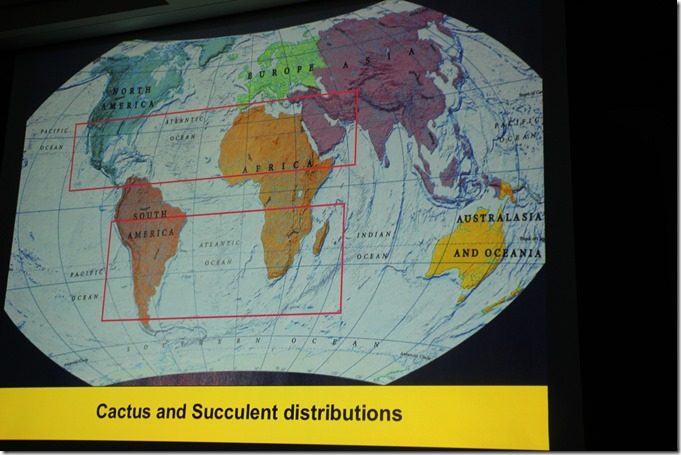
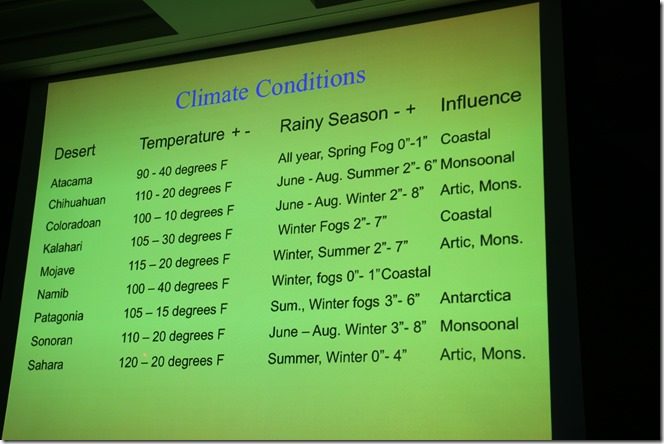
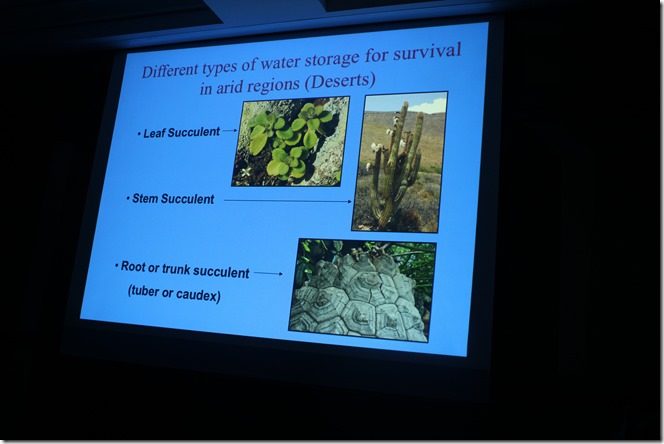
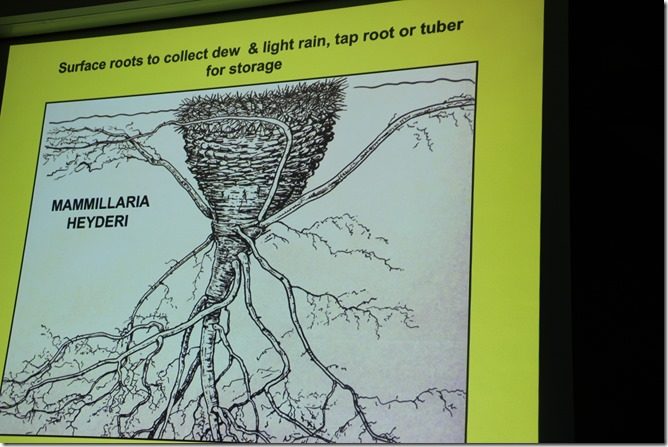
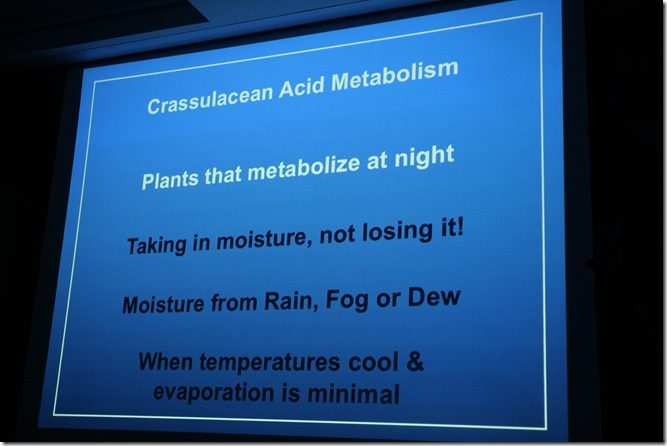

Recent Comments